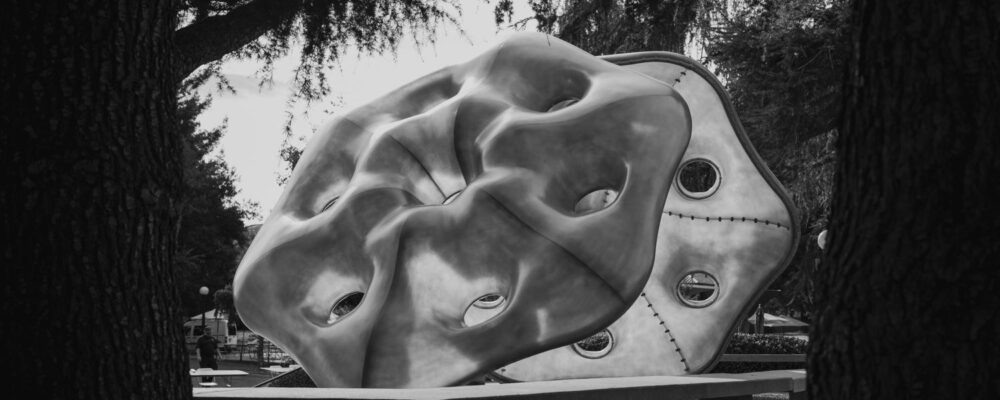What if instead of trying to win an argument, you aimed to truly understand your opponent? Imagine a world where disagreements were seen as opportunities to expand your own perspective and build empathy – a pathway to cultivating compassion, grace, and humility.
This radical approach to conflict was at the heart of PHIL 3: Democracy and Disagreement, a spring quarter course taught by Debra Satz, the Vernon R. and Lysbeth Warren Anderson Dean of the School of Humanities and Sciences (H&S), and Paul Brest, professor emeritus and interim dean at Stanford Law School (SLS) at the time.
Each week, Satz and Brest brought scholars with opposing viewpoints into conversation on a range of issues such as gun regulation, legislating social media, and legacy admissions. Members of the broader Stanford community were also invited to sit in on any of the course’s sessions.
“Civil disagreement, of course, can be hard, and it can be passionate. It can also be compatible with advocating for radical change of the status quo,” Satz said.
The course’s goal was to model what civil disagreement on divisive topics looks like, keeping it as a conversation rather than a debate.
Democracy and Disagreement
One of the sessions that stood out for Satz was a conversation on the Israeli-Palestinian conflict that featured former Palestinian Prime Minister Salam Fayyad and Israeli Professor Alon Tal discussing the potential of a two-state solution.
“Even the most high-stakes, passionate, and very deep disagreement can be conducted in a meaningful way and people can learn,” Satz said.
For Brest, a highlight was exploring the complexity of issues and appreciating them from many perspectives.
“Some of the issues [covered in the course] were not merely two-sided,” Brest said. “Many were multifaceted. The goal of the class was to listen to another position, to look for its strengths as well as its weaknesses, and to acknowledge your own position.”
Jeff Hancock (left) and Anna Lembke (right) discussed the effects of social media on well-being with Debra Satz (middle) and Paul Brest. | LiPo Ching, School of Humanities and Sciences
How differences emerge
A goal of the course was to show students how disagreement can arise.
A discussion between Stanford scholars Jeff Hancock and Anna Lembke about whether social media is addictive, for example, highlighted how disputes can emerge due to differences in data and research methodology.
Lembke, who is a professor of psychiatry and behavioral sciences at the School of Medicine and author of the bestselling book Dopamine Nation: Finding Pleasure in the Age of Indulgence, shared how over the past decade, she has treated an increasing number of patients whose behavior mirrors all the signs and symptoms of addiction.
“But their drug of choice is digital and social media,” said Lembke. Her opinion is based on clinical experiences – real, firsthand accounts of a problem.
Hancock, however, has a different perspective. After reviewing some 700 studies and 70 meta-analyses published since 2006 in the social sciences, he found no conclusive evidence that social media use is linked to harm to well-being at the population level.
Hancock emphasized the importance of considering the content and the context of social media use, rather than simply categorizing it as addictive or not. He argued that framing it as such takes away the responsibilities of platforms and users. What is needed, he said, is a broader discussion about the skills, regulations, and support parents and children need for responsible use – areas he and Lembke found consensus around.
Parsing through diverging sets of scientific-based evidence to figure out where one stands on an issue can be challenging. As Brest remarked to the class, it can even be “confusing,” but this type of information-gathering is crucial for a democracy.
“People talk about an epistemic virtue of a democracy – which is you’re amalgamating a lot of different pieces of information that can be very different – with the hope that you’re getting better information than you would if you just went top down with one point of view,” Satz said in an interview with Stanford Report.

Debra Satz (left) and Al Roth (right) discussed kidney exchanges as part of the spring quarter course, “Democracy and Disagreement.” | LiPo Ching, School of Humanities and Sciences
Separating opinion from evidence
Students also saw how scholars can arrive at very different conclusions even when they have the same information.
Sometimes, disputes emerge because of conflicting values, which was a point economic historian Ran Abramitzky made when discussing the two sides of the immigration debate, an area he has devoted much of his career to studying.
“Even when we can agree on evidence and facts, reasonable people can reasonably disagree about what the policy recommendations are,” said Abramitzky, who is also the senior associate dean for the social sciences in H&S. He also showed what can and cannot be concluded from the data and how inconclusive evidence has inspired additional research.
As Satz reflected during one of the course’s final sessions, disagreement brings out different pieces of information.

The last class featured a panel of four students, including Senkai Hsia (left) and Christian Figueroa (right). | Fawn Hallenbeck, School of Humanities and Sciences
Cultivating empathy
In their course evaluations, students highlighted the unique nature of the discussions and debates, noting they hadn’t experienced anything similar in their other Stanford classes, according to Satz.
The course culminated with a panel discussion featuring four students from the class sharing what they learned to be essential conditions for civil disagreement.
The student panelists chose clips from previous classes to discuss, including a snippet from the conversation between Satz and economics Professor Alvin Roth about his work designing kidney exchange programs that match donors to patients, efforts that earned him the Nobel Prize in 2012.
What stood out to Christian Figueroa, ’27, was how considerate the two scholars were toward each other, despite their radically opposing viewpoints.
“For me, something that was pretty major out of this conversation was just the large amount of empathy within the disagreement,” Figueroa said. He noted how Satz and Roth could have been more assertive with their opinions, but instead chose language that acknowledged, appreciated, and sometimes, as Alexa Kupor, ’25, pointed out, anticipated differences.
Senkai Hsia, ’24, who is graduating in December with degrees in mechanical engineering and international relations, shared how he admired the respect and intellectual curiosity the scholars demonstrated, as well as the generosity and good faith they showed one another.
“Humility, I think, is what creates the conditions for that good faith,” Hsia said.
Satz and Brest will be teaching the course again in the winter with a different set of issues. Information forthcoming.
Roth is the Craig and Susan McCaw Professor of Economics.”}”>
“Stanford University, officially Leland Stanford Junior University, is a private research university in Stanford, California. The campus occupies 8,180 acres, among the largest in the United States, and enrols over 17,000 students.”
Please visit the firm link to site






